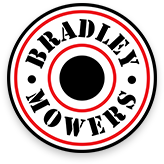Although most turf grasses are great at resisting diseases, lawn infections do sometimes occur. If you notice your lawn looking thin, dry, or discolored, it may be the result of a lawn disease. Treating the problem early will prevent it from spreading and causing permanent damage to your yard. Here are eight of the most common lawn infections to watch out for:
1. Rust
Rust appears as small, yellowish specks on stems and leaves. Over time, the specks may spread and grow into orange pustules. When the disease becomes severe, the lawn may start to develop an orange or red hue. The disease often occurs as a result of drought or lack of fertility.
2. Brown Patch
Brown patch is a lawn disease that causes brownish-yellow circular patches in the grass. The patches can range from six inches wide to several feet wide, and the infection can affect warm season and cool season lawn grasses. Brown patch often occurs during periods of heat or humidity, but it can also be caused by excessive irrigation, poor drainage, and compacted soils.
3. Powdery Mildew
Powdery mildew is a common fungal disease in cool season grasses, especially Kentucky bluegrass. It tends to appear in shady areas or during a prolonged period of overcast weather, and it causes a white dust to form on leaf blades.
4. Red Thread
Red thread is common in cool season grasses and is caused by low nitrogen levels in the soil. It causes a red webbing to appear on the grass, but it's mostly harmless. Fungicides can treat red thread, but most people eliminate the disease just by fertilizing with nitrogen.
5. Leaf Spot
Leaf spot occurs during cool, wet weather and affects a wide variety of grasses. It causes small, dark lesions on the leaf blades, which eventually cause the plants to die and turn brown. Leaf spot often occurs in large patches and can kill entire sections of a lawn. Mowing the grass slightly higher rather than lower can help prevent the disease.
6. Snow Mold
Snow mold usually appears at the end of winter or the beginning of Spring as the snow melts. Gray snow mold infects the leaf tissue of a plant, and pink snow mold infects the crown. Pink snow mold is usually more harmful, but both types can hurt or kill a lawn. The affected spots tend to shrink when the weather becomes warmer, though.
7. Fairy Ring
Fairy rings are dark green circles or semi-circles of grass that can affect all types of turf grass. The surrounding grass usually dies or dries out, but the problem is very difficult to deal with. Proper fertilization and irrigation can prevent fairy rings from forming.
8. Dollar Spot
Dollar spot mostly affects bluegrass and ryegrass. It causes small, straw-colored patches with lesions across the leaves. The disease usually doesn't cause permanent damage, but it can be prevented with infrequent but deep waterings.
By taking time and identifying which disease your grass may have, you will be able to accurately provide the cure for your lawn.
